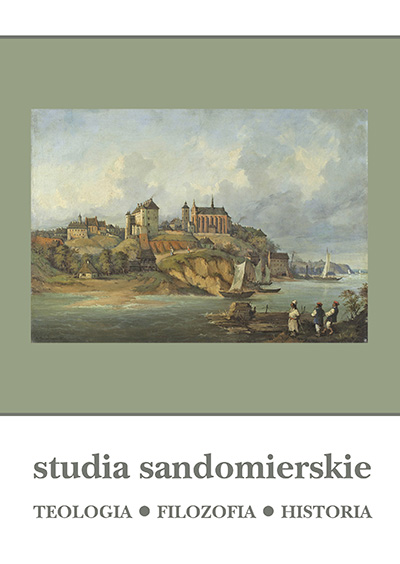The Phrase “Time, Times, and Half Time” as a Limited Period of Trouble and Suffering in the Book of Daniel and the Apocalypse of Saint John
DOI:
https://doi.org/10.15633/sts.4183Keywords:
time, persecution, suffering, Book of Daniel, Revelation, eschatology, kairosAbstract
This article presents an analysis of the biblical texts of the Book of Daniel and the Apocalypse of St. John which use the term “time, times and half time.” This expression describes a period of evil forces working against God, when God’s people experience persecution and oppression. In addition, in the book of Revelation, there are equivalent expressions based on the conversion of the above-mentioned expression for a period of three and a half years: „forty-two months” and „one thousand two hundred and sixty days,” as well as the numerically identical period of „three and a half days.” First, the concept of time in Scripture is briefly discussed and Hebrew and Greek terminology concerning time is reviewed. Then, the texts in which the phrase „time, times and half time” appear directly are analyzed (Dn. 7:25; 12:7; Rev 12:14) and places with synonymous terms (Rev 11:2.3; 12:6; 13:5). The summary indicates the main ideas behind the analyzed terms. As a result of this analyzes, it will be shown that the term “time, times and half time” and equivalent expressions that indicate a time interval characterized by suffering and persecution caused by the apparent triumph of evil. This victory, however, is illusory and entirely transitory, limited by the power of God who rules over time and history.
References
Aune D.E., Revelation 6–16, Word Biblical Commentary 52B, Dallas 2002.
Bauer W., A Greek-English Lexicon of the New Testament and Other Early Christian Literature, ed. F.W. Danker, 3rd edition, Chicago–London 2000.
Beale G.K., The Book of Revelation. A Commentary on the Greek Text, Carlisle 1999.
Farkaš P., La „donna” di Apocalisse 12. Storia, bilancio, nuove prospettive, Tesi Gregoriana – Teologia 25, Roma 1997.
Goldingay J. E., Daniel, Word Biblical Commentary 30, Dallas 2002.
Hałas S., Pustynia miejscem próby i spotkania z Bogiem. Wybrane zagadnienia biblijnej teologii pustyni, Kraków 1999.
Hatch E., Redpath H. A., A Concordance to the Septuagint and the Other Greek Versions of the Old Testament (Including the Apocryphal Books), Grand Rapids 2005.
Holladay W.L., Köhler L., A Concise Hebrew and Aramaic Lexicon of the Old
Testament, Leiden 1971.
Homerski J., Księga Daniela. Wstęp, przekład z oryginału, komentarz, ekskursy, Pismo Święte Starego Testamentu 11/2, Poznań 2008.
Józef Flawiusz, Wojna żydowska, tłum., wstęp, komentarz J. Radożycki, Poznań 1984.
Köhler L., Baumgartner W., Richardson M. E. J., Stamm J. J., The Hebrew and Aramaic Lexicon of the Old Testament, Leiden–New York 1999.
Leksykon biblijny, red. F. Rienecker, G. Maier, Prymasowska Seria Biblijna 18, Warszawa 2001.
MacArthur J., Revelation 1–11, MacArthur New Testament Commentary, Chicago 1999.
Nowińska J., Ap 12 jako teologia historii, „Ruch Biblijny i Liturgiczny” 4 (2009), s. 269–283.
Nowy Testament grecki i polski. Novum Testamentum Graece et Polonice, red.
R. Bogacz, R. Mazur, Poznań 2017.
Ostański P., Objawienie Jezusa Chrystusa. Praktyczny komentarz do Apokalipsy, Ząbki 2005.
Parchem M., Księga Daniela. Wstęp, przekład z oryginału, komentarz, Nowy Komentarz Biblijny – Stary Testament 26, Częstochowa 2008.
Podeszwa P., Paschalna pamięć o Jezusie. Studium egzegetyczno-teologiczne wyrażenia ἡ μαρτυρία Ἰησοῦ w Apokalipsie św. Jana, Studia i Materiały 142, Poznań 2011.
Ryken L., Wilhoit J.C., Longman III T., Słownik symboliki biblijnej, tłum. Z. Kościuk, Prymasowska Seria Biblijna 20, Warszawa 2003.
Siemieniec T., Teologiczna funkcja terminów καιρός i χρόνος w Apokalipsie Janowej, „Verbum Vitae” 35 (2019), s. 307–342.
Stachowiak L., Teologiczno-biblijna problematyka czasu, „Ruch Biblijny i Liturgiczny” 5 (1964), s. 291–303.
Stefaniak L., Interpretacja 12 rozdziału Apokalipsy św. Jana w świetle historii egzegezy, Poznań 1957.
Szczepanowicz B., Tajemnice liczb biblijnych, Kraków 2018.
Theological Dictionary of the New Testament, ed. G. Kittel, G. Friedrich, transl. G.W. Bromiley, Grand Rapids 1995.
Urbanek B., Apokalipsa. Szczęśliwy, kto ją odczytuje, Częstochowa 2012.
Vollständige Konkordanz zum griechischen Neuen Testament unter Zugrundelegung aller kritischen Textausgaben und des Textus Receptus, Hrsg. K. Aland, Bd. 1–3, Berlin–New York 1983.
Waddell R., What time is it? Half-past three: How to Calculate Eschatological Time, „Journal of the European Theological Association” 2 (2011), s. 141–152.
Widła B., Słownik antropologii Nowego Testamentu, Prymasowska Seria Biblijna 21, Warszawa 2003.
Wojciechowski M., Apokalipsa św. Jana. Objawienie, a nie tajemnica, Nowy Komentarz Biblijny – Nowy Testament 20, Częstochowa 2012.
Żarnowski R., Dwóch Świadków Chrystusa w historii egzegezy (Ap 11,3–13), „Sympozjum” 23 (2019), nr 1, s. 159–172.
Żarnowski R., Tożsamość Dwóch Świadków Chrystusa. Studium literacko-teologiczne Ap 11,3–13, praca magisterska, Uniwersytet Papieski Jana Pawła II w Krakowie, Kraków 2018.
Downloads
Published
Issue
Section
License
Copyright (c) 2021 Robert Żarnowski

This work is licensed under a Creative Commons Attribution-NonCommercial-NoDerivatives 4.0 International License.
Authors who publish with this journal agree to the following terms:
- Authors retain the copyright and full publishing rights without restrictions, and grant the journal right of first publication with the work simultaneously licensed under a Creative Commons Attribution 4.0 International License that allows others to share the work with an acknowledgement of the work's authorship and initial publication in this journal.
- Authors are able to enter into separate, additional contractual arrangements for the non-exclusive distribution of the journal's published version of the work (e.g., post it to an institutional repository or publish it in a book), with an acknowledgement of its initial publication in this journal.
- Authors are permitted and encouraged to post their work online (e.g., in institutional repositories or on their website) prior to and during the submission process, as it can lead to productive exchanges, as well as earlier and greater citation of published work (See The Effect of Open Access).

